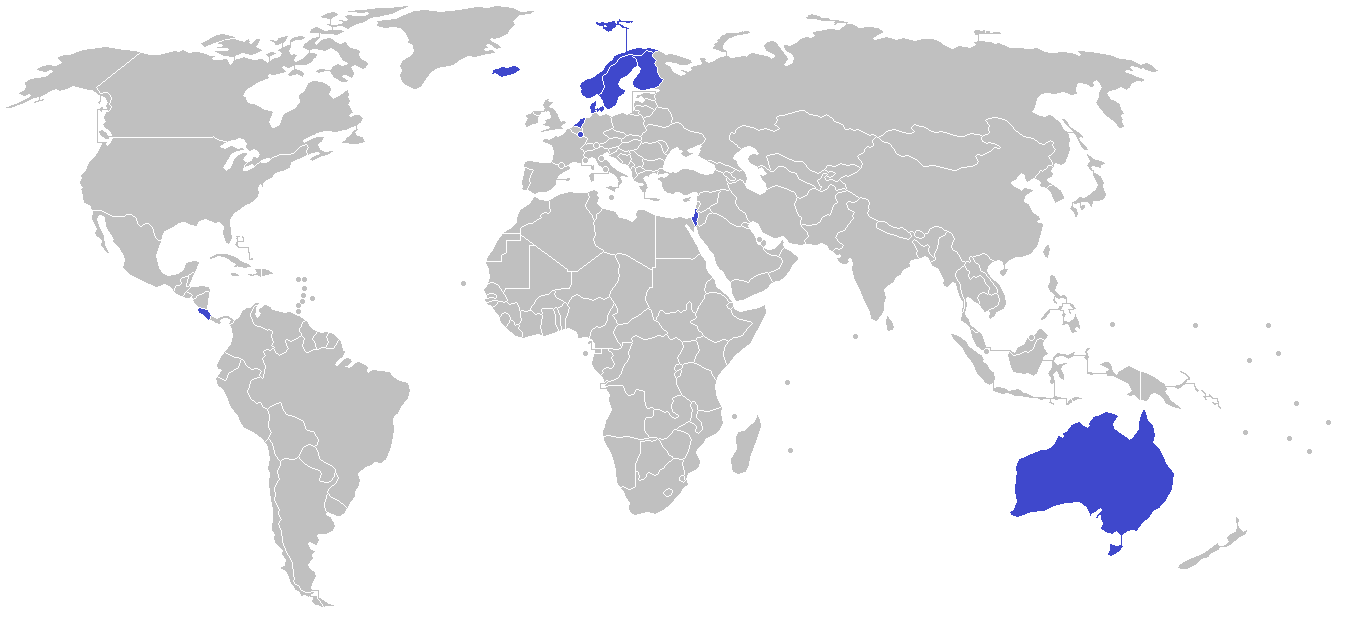World Happiness Report 2025 Top 10 Countries Map


Marcus Rodriguez
Historical Geography Expert
Marcus Rodriguez specializes in historical cartography and geographic data analysis. With a background in both history and geography, he brings unique...
Geographic Analysis
What This Map Shows
The visualization at hand presents the top 10 countries ranked in the 2025 World Happiness Report. This report, which is published annually, assesses the state of global happiness based on various metrics such as GDP per capita, social support, healthy life expectancy, freedom to make life choices, generosity, and perceptions of corruption. The countries marked on the map not only reflect high levels of happiness but also showcase a complex interplay of cultural, economic, and social factors that contribute to their rankings.
Deep Dive into Happiness Metrics
Happiness is not just a fleeting emotion; it’s a crucial indicator of the overall well-being of a population. The World Happiness Report uses a variety of metrics to gauge happiness, which can often reflect deeper societal values. For instance, countries that frequently appear at the top of the rankings, such as Finland and Denmark, tend to excel in social equality and welfare systems. They have robust support networks in place, which help individuals feel more secure and valued.
Interestingly, when examining the GDP per capita, wealthier nations often score higher in happiness rankings. However, this correlation is not absolute. Countries like Bhutan have embraced a unique measure called Gross National Happiness (GNH), which prioritizes spiritual, environmental, and cultural well-being over mere economic growth. This illustrates that while economic factors play a significant role, they are not the sole determinants of happiness.
One of the key factors influencing happiness is social support. In nations where individuals can rely on family, friends, and community, there’s a greater sense of belonging and security. This is particularly evident in Scandinavian countries, which consistently rank high due to their strong social safety nets and community-oriented policies. Furthermore, healthy life expectancy is a crucial metric, as it reflects not just the length of life but also the quality of life experienced by citizens. Countries that prioritize healthcare and healthy living tend to have happier populations.
Moreover, the freedom to make life choices is a critical factor in assessing happiness. Societies that encourage individual autonomy and support personal decisions create environments where citizens feel more empowered and satisfied with their lives. This is often accompanied by lower levels of corruption, which can erode trust in institutions and diminish overall happiness.
Regional Analysis
Breaking down the map regionally reveals fascinating trends. For example, the Nordic countries, including Finland, Denmark, and Sweden, dominate the top spots consistently. Their success can be attributed to a combination of high taxes funding extensive welfare programs and a cultural emphasis on community and equality.
In contrast, countries in regions such as Latin America show different dynamics. Nations like Costa Rica, which ranks notably high in happiness, focus on environmental sustainability, access to nature, and a slower pace of life, which contributes to their citizens' overall well-being. The importance of 'Pura Vida' (pure life) in Costa Rican culture highlights how lifestyle and values can significantly impact happiness.
Interestingly, while many high-ranking countries are in Europe, nations like the United States and Canada also perform well. However, a closer inspection reveals that disparities exist within these countries, particularly based on socio-economic status. In the U.S., happiness varies greatly between urban and rural areas, reflecting the complex landscape of wealth, opportunity, and social cohesion.
Significance and Impact
Understanding the factors that contribute to happiness is not just an academic exercise; it has profound implications for policy-making and societal well-being. As governments around the world grapple with issues such as mental health, economic disparity, and social unrest, the lessons learned from the World Happiness Report can guide them in crafting policies that promote greater happiness and fulfillment among their citizens.
Current trends indicate a growing recognition of the importance of mental health and well-being in public policy. With the challenges posed by the COVID-19 pandemic, there's a heightened focus on social support systems and community resilience. Countries are increasingly looking at happiness as a metric for success, not merely economic output.
In conclusion, the map of the top 10 countries in the 2025 World Happiness Report serves as a powerful reminder of what truly matters in our societies. It challenges us to reconsider how we define success and happiness and encourages a more holistic approach to improving the human experience around the globe.
Visualization Details
- Published
- October 31, 2025
- Views
- 60
Comments
Loading comments...